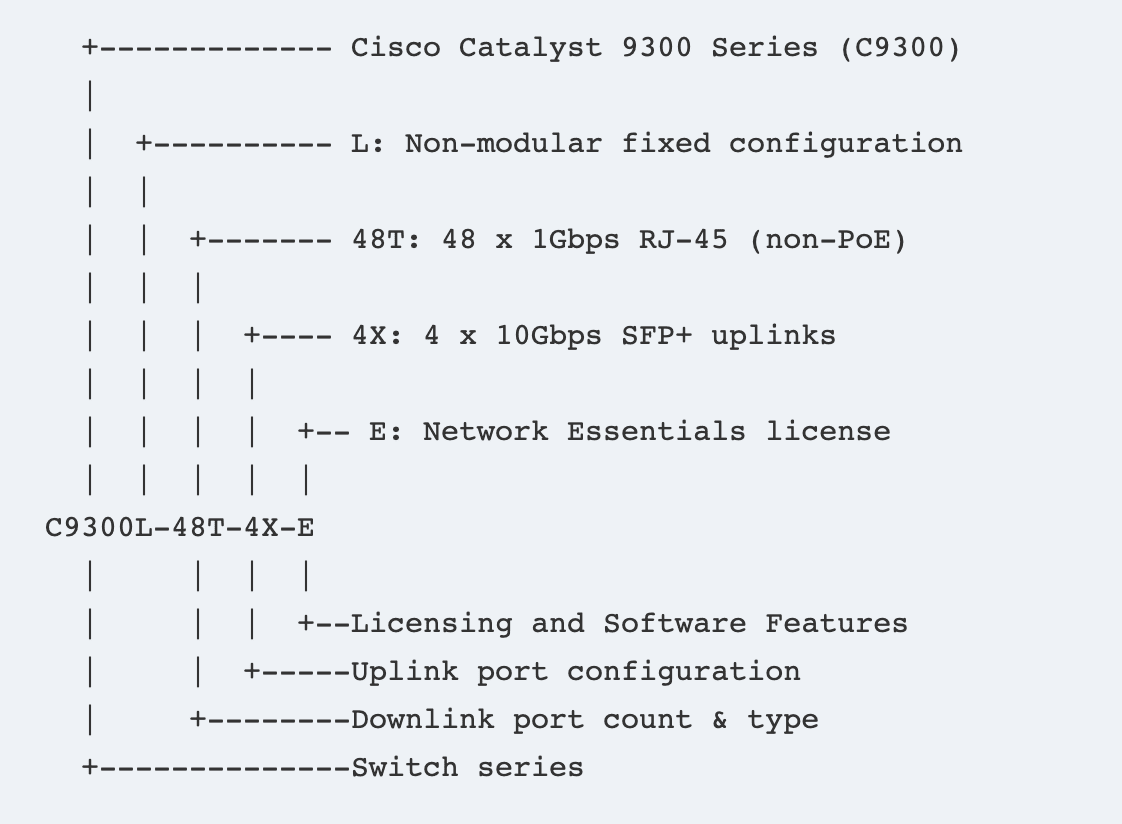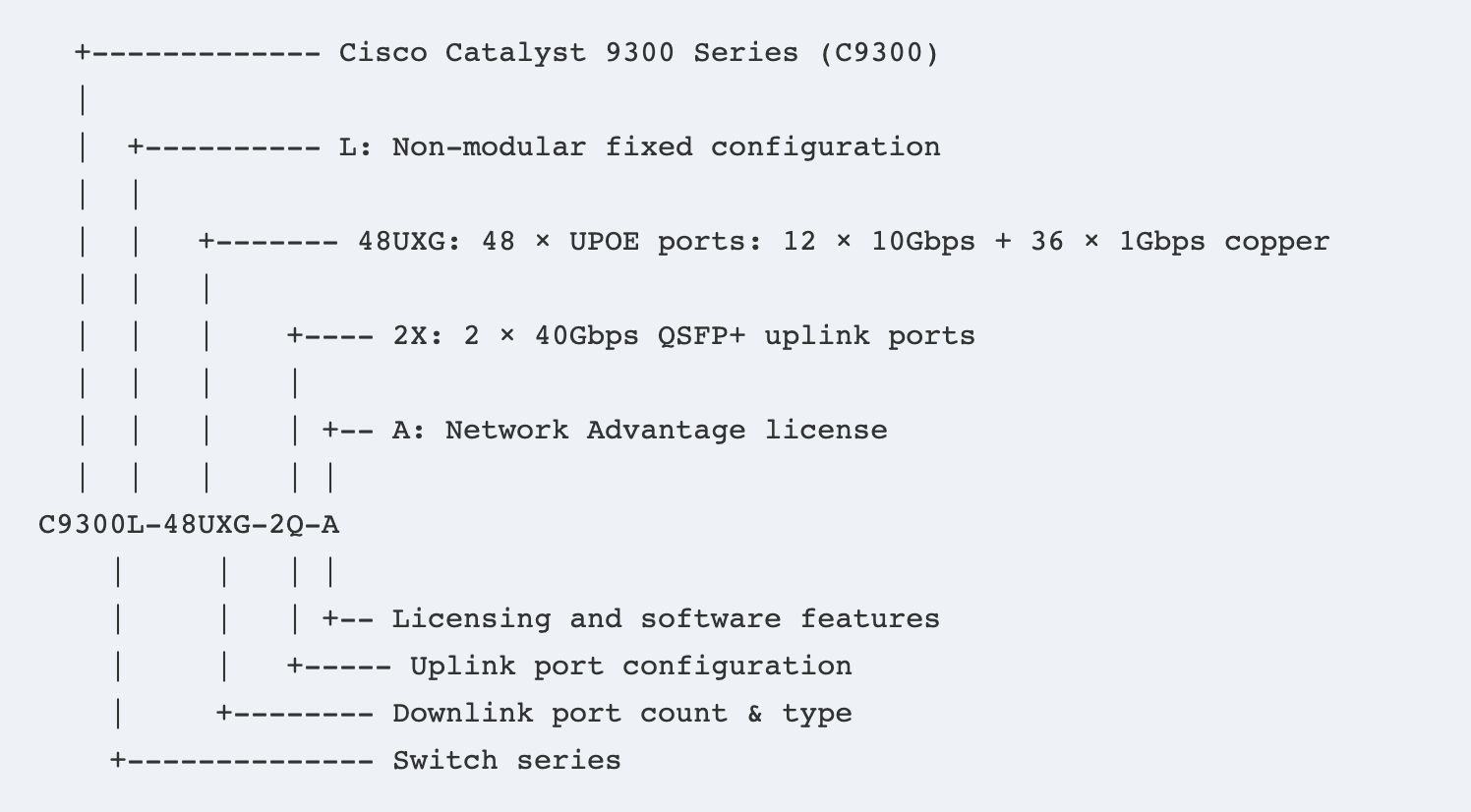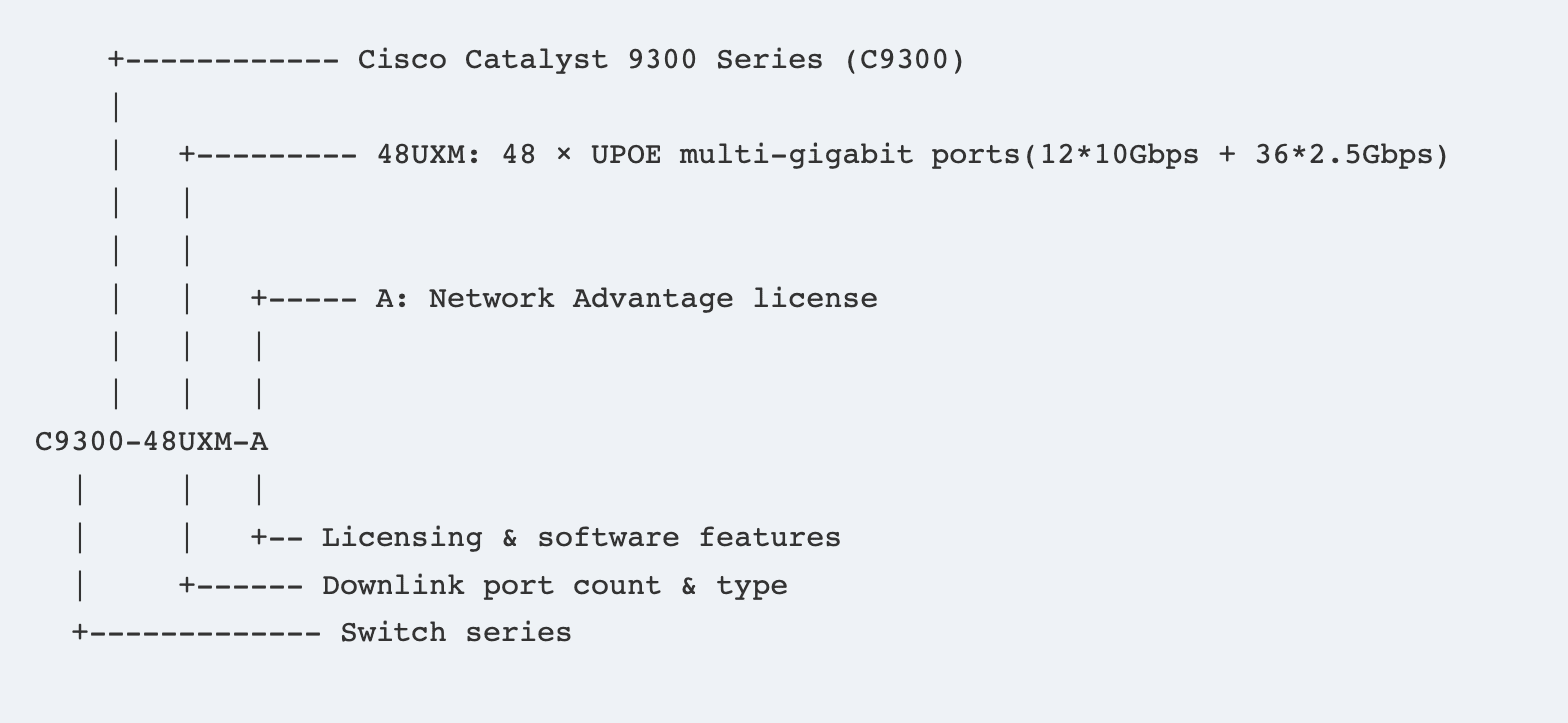Your cart is currently empty!
Understanding cisco switch naming convention can significantly simplify equipment selection, procurement processes, and network planning. Cisco’s Catalyst 9000 series switches employ a consistent naming convention that encodes key characteristics—platform family, port count and type, uplink interfaces, licensing and power—directly into the model name.
In this demonstration, we’ll focus on the Cisco Catalyst series—because it’s the most widely deployed—but the same naming rules can be applied to other switch families as well. Let’s get started!
Catalyst Series and Model
Catalyst series switches are primarily composed of the following families:
- 9200: Fixed-stackable, access-layer switches.
- 9300: Modular, stackable, high-performance access-layer switches.
- 9400: Modular chassis switches with supervisor engines and line cards.
- 9500、9600
Within these families you’ll find models like C9300L, C9300, C9300X, etc.
A ”L” suffix (e.g., C9300L) denotes a non-modular switch with fixed uplinks—once deployed, its uplink capacity cannot be expanded if traffic grows.
No suffix (e.g., C9300) indicates a modular design that supports optional, pluggable uplink modules for flexible uplink port expansion.
- “L” suffix (e.g., C9300L): Non-modular, fixed uplinks.
- No suffix (e.g., C9300): Modular design, supports optional uplink modules.
Decode Cisco Catalyst Switch SKU




By examining the two device models above, We can learn that:




UXM:
U: UPoE(90W)
X: mGig up to 10Gbps
M: mGig up to 2.5Gbps
C9300-48UN
|
+--- 48UN: 48 x UPoE mGig up to 5Gbps(48 * 5Gbps)UN:
U: UPoE(90W)
N: mGig up to 5Gbps
C9300-24H
C9300-48S
C9300X-24Y
C9300-48UB
C9300L-48PF-4GDownlink Port Naming Convention
Uplink Port Naming Convention
Power over Ethernet (PoE) Standards Overview
Cisco Catalyst models embed PoE capability in their naming (e.g. “P”, “U”, “H” suffixes). Below is a concise summary of the IEEE—and Cisco-proprietary—PoE classes you can reference in your article:|
Standard |
IEEE Spec |
Max Power |
Cisco Naming |
Typical Use Cases |
|---|---|---|---|---|
|
PoE+ |
802.3at |
30 W |
P |
Pan–tilt–zoom cameras, multi-radio APs |
|
UPOE |
802.3bt Type 3* |
60 W |
U |
Video conferencing units, digital signage |
|
UPOE+ |
802.3bt Type 4* |
90 W |
H |
High-performance wireless APs, lighting |



